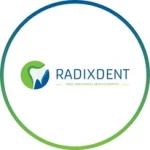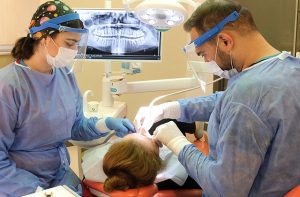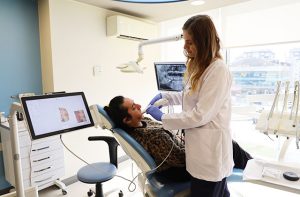E-max/Empress
There may be various reasons why dental restorations are needed. The most suitable material and treatment option should be determined by evaluating each individual’s functional and aesthetic expectations. Prosthetic restorations can be applied to maintain aesthetic expectations due to color differences in the teeth or to restore functional structure by addressing tissue loss. With advancing technologies, materials that are both aesthetically and functionally durable and closely resemble the natural tooth form have been developed. E-max dental veneers are produced in this way, offering a highly natural tooth form and durability.
4.1. What Are E-max/Empress Crowns?
E-max crowns are dental restoration materials made from a special ceramic called lithium disilicate. Since they are produced using high pressure and special reinforcement methods, they are durable, highly biocompatible, aesthetically pleasing, and have high light transmission, making them very similar to natural teeth.
4.2. When Can E-max/Empress Crowns Be Applied?
E-max restorations can be preferred in cases where aesthetic expectations are high, but there is also significant tissue loss due to decay or trauma. They are often chosen to naturally mask tooth discoloration caused by consuming pigmented foods or systemic conditions. If there are tolerable gaps between teeth, these restorations can be used to close them by altering tooth sizes and can serve as an alternative to orthodontic treatment for minor misalignments. When dental structures are weakened due to procedures like root canal treatment and there is a tendency for fractures, E-max crowns can be used to enhance tissue resistance.
4.3. What Are the Advantages of E-max/Empress Crowns?
E-max materials are widely preferred due to their high light transmission, which provides a natural tooth appearance. Their smooth surface reduces bacterial accumulation, and their easily polished finish enhances oral hygiene. They are highly biocompatible, allowing for an easy and short treatment process.
With digital facial and smile design, E-max materials can be designed in a computer environment, enabling the prediction of color and form variations before treatment, thus increasing technical precision. Since they do not contain metal, they are a safe option for individuals with metal allergies. Each veneer is tailored specifically to the individual tooth and patient, with digital tracking ensuring precision and record-keeping.
E-max is a hard and durable material, making it a preferred choice for ceramic fillings such as inlays and onlays used in cavities. Compared to other restorations, it has a more vibrant and translucent structure, preventing the issue of gray reflection. Due to its delicate craftsmanship, it can provide a fine gingival emergence profile that aligns well with the gum tissue.
Additionally, E-max crowns bond to the teeth using special adhesive materials that ensure long-lasting durability and a seamless connection between the restoration and the natural tooth structure.
4.4. In Which Cases Are E-max/Empress Crowns Not Preferred?
Although E-max materials are strong, they may not be the best choice for long-span bridge prosthetics due to their relative weakness against force imbalances. In cases where there is gum misalignment or infection, addressing these issues first is recommended to ensure proper tissue adaptation.
For patients with habits such as nail-biting or excessive clenching, which exert excessive force on the teeth, alternative materials may be suggested to prevent damage to the restoration.







